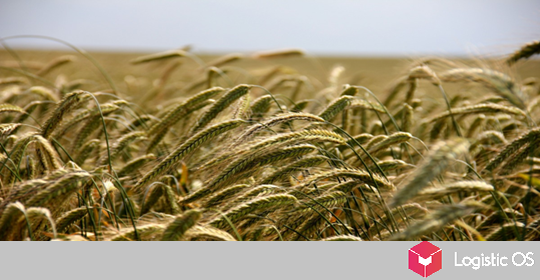Sell or Hold? The question facing the manufacturers.
According to the Ministry of Agriculture, as of October 30, cereals and legumes were threshed from 48.5 million hectares — 97.3% of the area.
The harvested crop is 12 million tons higher than last year — 137.7 million tons in bunker weight.
Wheat: 87.5 million tons — 10 million tons more than last year.
Sunflower: 12.6 million tons — 756 thousand tons less than in 2019. It remains to harvest 5% of the crops.
Soybean: 3.9 million tonnes — a decrease of 204 thousand tonnes. Until the end of the harvest, 18% of the area remains to be processed.
Rapeseed: 2.7 million tonnes — an increase of 512 thousand tonnes. Not threshed 3% of crops.
Wheat export prices fell $ 2 to $ 253 per tonne FOB last week.
The decline took place against the background of the weakening of world exchanges, but the domestic market continues to grow: it is facilitated by the depreciation of the ruble and the interest of exporters.
Sunflower prices continue to rise so far, and experts believe that this trend will continue.
How actively are farmers selling the new crop or holding it back in anticipation of higher prices?
There are no clear trends here: it all depends on the geographic location of the producer and the size of the harvest.

So, for example, in the Orenburg region the harvest of winter crops is almost twice as high as last year, and a little less oilseeds were harvested.
At the same time, high prices for raw materials allow farmers to sell their crops slowly, as soon as the need for funds to pay off loans, lease payments, and purchase of means of production approaches.
Some districts of the Rostov region, which received a yield lower than last year’s both for grains and oilseeds, compensated for it with a high price and are actively selling it, because they fear the state’s position that has not yet been officially announced: if there are no restrictions, prices may continue growth.
If the state intervenes in the pricing process, then the price will not rise.
The representatives of the agrarians of Voronezh Region say that they are satisfied with the harvest this season, and the high level of prices encourages quick sales.
And although the harvest of soybeans, sunflowers and sugar beets is lower than last year, the increase in the cost of agricultural crops against the background of a decrease in the yield of the world’s largest exporters and a depreciation of the ruble, allows not only to receive more revenue compared to last year, but also to have a production profitability of over 30%.
Farmers of Nizhny Novgorod Region are generally satisfied with the season: they received high yields for both wheat and rapeseed.
The territorial location of enterprises (distance from ports) and the proximity of livestock complexes to them is a factor in the increased demand for feed grain.
Here, manufacturers mostly work not for export, but for the domestic market.
Some enterprises are selling only 4th class wheat so far, and even then not very actively: only 7% of the harvest has been sold.
Grade 3 wheat is being held back, expecting further price increases.
But the export of oilseeds is more active: the price of rapeseed oil has risen this year to 65 thousand rubles per ton (in 2019 — 46 thousand rubles per ton).
The rapeseed oil market is now in short supply and the number of people willing to buy in large volumes has grown significantly.
How many manufacturers — so many opinions. Someone is waiting for a further rise in prices, someone is hedging and taking advantage of the moment until the world and domestic economy reverses the growth trend.

